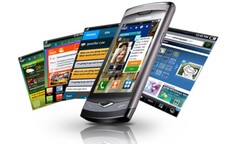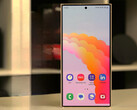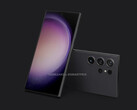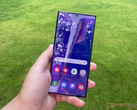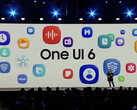While many people may only think of Samsung as an Android smartphone brand, that hasn’t always been the situation. Many years ago, Samsung actually sold smartphones that were powered by other operating systems. One of them is Bada OS, a proprietary mobile operating system that powered Samsung smartphones released between 2010 and 2012. Before diving into what happened to Bada, and why Samsung completely abandoned it in favor of Android, let us go down memory lane to revisit this mobile OS.
Are you a techie who knows how to write? Then join our Team! Wanted:
- Specialist News Writer
Details here
The Origin of Bada OS
Bada was an evolution of the operating system that powered Samsung’s feature phones sold in the 2000s. Unveiled in London in December 2009, Bada OS was touted as a new operating system for Samsung smartphones. Unlike the OS that powered its feature phones which was unsurprisingly limited in a lot of ways, Bada boasted features such as support for multitasking, multiple web browsers, tabbed browsing, in-app purchases, face recognition, and multipoint touch among others. However, what really gave it an upper hand over the OS that ran on its feature phones was the availability of more tools for app development.
The first Bada smartphone was the Samsung Wave S8500, which was announced at Mobile World Congress Barcelona in February 2010. Future Samsung phones preloaded with Bada OS also bore the ‘Wave’ name, which is interesting considering Bada actually means ‘ocean’ in Korean. The Wave S8500 wasn’t just the first smartphone to ship with Samsung’s new mobile OS, it was also the first phone ever to launch with a Super AMOLED display. As a matter of fact, save for the design and OS, the Wave S8500 had almost identical specs to the Samsung Galaxy S (I9000), which was Samsung’s Android flagship released in the same year.
Over the course of the next 24 months, Samsung would release a few more smartphones powered by Bada OS, some of which could be considered flagships such as the Wave II and Wave 3, as well as mid-range and budget models. There were also interesting models like the Wave 2 Pro which had a slide-out QWERTY keyboard.
What was wrong with Bada OS?
The early Bada smartphones launched with Bada 1.x which had a Touchwiz interface similar to the Galaxy smartphones of old. Early adopters complained about issues such as multitasking being limited to a few apps, most of which were local apps; a saturated information bar; and some quirks with the software. However, the biggest problem was the selection of apps.
Bada phones came with an app store called Samsung Apps. However, compared to Android and iPhone whose app stores had over 70,000 and 200,000 apps respectively back then, there were fewer than 1,000 apps on Samsung Apps when the first Bada smartphone launched, a very small fraction of what the competition offered. With similar-priced (and even cheaper) Android phones including those from Samsung offering a superior app selection, it was difficult to recommend a Bada phone to buyers.
To be fair, Samsung did significantly improve the app selection to 40,000 by the time Bada 2.0 was unveiled at MWC 2011, and the first Bada 2.0 smartphones began shipping later that year. It was able to achieve this by releasing a software development kit (SDK) that helped developers create more apps for the platform. It also ran developer contests where it awarded winners monetary rewards. However, it still lagged behind its major rivals - Android and iOS - in terms of app selection.
Top 10 Laptops
Multimedia, Budget Multimedia, Gaming, Budget Gaming, Lightweight Gaming, Business, Budget Office, Workstation, Subnotebooks, Ultrabooks, Chromebooks
under 300 USD/Euros, under 500 USD/Euros, 1,000 USD/Euros, for University Students, Best Displays
Top 10 Smartphones
Smartphones, Phablets, ≤6-inch, Camera Smartphones
The Death of Bada OS
Despite the shortcomings of Bada, Samsung managed to grab 2.2% of the market share by the third quarter of 2011, eighteen months after the first Bada smartphone was released. It ranked fourth behind Android, Symbian, iOS, and Research in Motion (BlackBerry), and had managed to push Microsoft’s waning Windows Phone to fifth place. This is despite the fact that the first set of Bada smartphones were not sold in the United States. If Bada had any chance of owning a larger slice of the smartphone market, it needed to change its strategy. First, there were rumors Samsung planned to make Bada open-source like Android. However, that didn’t happen. What it eventually did was surprising!
At CES 2012, a Samsung electronics Senior VP, Tae-Jin Kang, announced that Bada OS would be merged with Tizen OS, a new open-source OS that was backed by Intel, which itself rose from the ashes of what was MeeGo, a mobile OS that was co-developed by Nokia and Intel. This partnership was important for Samsung as Nokia had abandoned MeeGo to adopt Windows Phone while Google was seen to be taking mobile hardware seriously with its acquisition of Motorola.
Samsung didn’t launch its first Tizen smartphone, the Samsung Z1, until January 2015, and unlike the first Bada smartphone which was a premium device, this was a budget smartphone that cost under US$100. It followed it up with the Z2, Z3, and the Samsung Z4 which was its last Tizen phone released in 2017 before eventually abandoning Tizen as a mobile phone OS (a different story entirely). However, that wasn’t the end of the OS. A version of the operating system powered a number of Samsung smartwatches up until 2020 while another version of the OS is the software behind Samsung’s smart TVs.
Source(s)
Samsung, PCMag, The Verge, The Wall Street Journal
Teaser image: Bada/WaybackMachine


 Deutsch
Deutsch English
English Español
Español Français
Français Italiano
Italiano Nederlands
Nederlands Polski
Polski Português
Português Русский
Русский Türkçe
Türkçe Svenska
Svenska Chinese
Chinese Magyar
Magyar